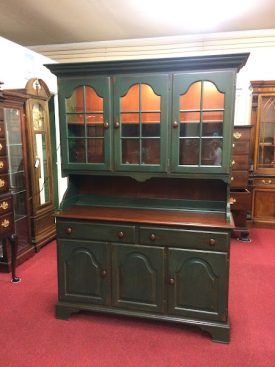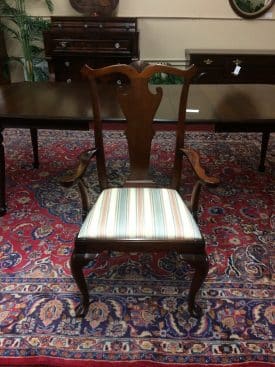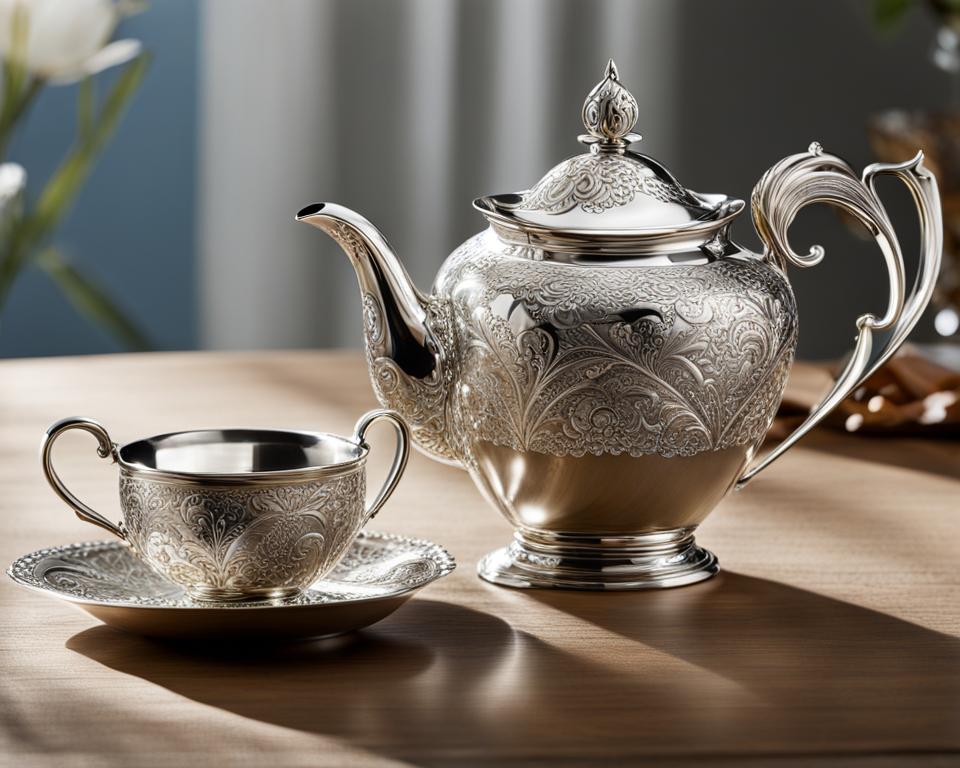As environmental awareness takes center stage in our daily lives, the demand for eco-friendly and sustainable furniture options is on the rise. Consumers are actively seeking out environmentally conscious furniture to align with a greener lifestyle. Sustainable home furnishings are crafted from an array of materials, including reclaimed wood, recycled elements, and bamboo—a symbol of rapid renewability. These green furniture choices are not just about embracing the aesthetics of sustainable living; they embody an ethic of stewardship for our planet, guaranteeing that the comfort and style of our homes does not come at the earth’s expense.
Key Takeaways
- Eco-friendly and sustainable furniture options cater to a growing need for green living spaces.
- Environmentally conscious furniture includes pieces made from renewable and recycled materials.
- Green furniture choices combine both functionality and environmental responsibility.
- Sustainable home furnishings help to minimize the depletion of natural resources.
- Choosing eco-friendly furniture supports a commitment to bettering our planet.
- Prioritizing furniture with certifications such as CertiPUR-US® ensures a healthier indoor environment.
Understanding Eco-Friendly and Sustainable Furniture
As modern consumers navigate the world of decor, sustainable home furnishings are taking center stage in the movement towards eco-conscious living. These pieces, celebrated for their minimal environmental footprint, reflect a dedication to the planet’s health and a cleaner lifestyle.
Defining Sustainable Home Furnishings
Sustainable home furnishings are defined by their eco-friendly nature and responsible production. These are items created with close attention to environmental impact, incorporating materials that are either renewable, such as bamboo, recycled, like plastic, or reclaimed from previously used products. Leading the charge, earth-friendly furniture brands are setting new standards in sustainable living, offering pieces that not only elevate home aesthetics but also tread lightly on the earth.
The Importance of Environmentally Conscious Furniture Choices
Making environmentally sustainable furniture picks is not just about following a trend—it’s about making a commitment to the future. As awareness around the pressing issues of deforestation, pollution, and resource depletion grows, consumers are increasingly seeking furniture options that don’t just look good but do good. The emphasis on long-lasting and non-toxic materials directly correlates to a healthier, more sustainable household, proving that you can make a positive impact one furniture choice at a time.
| Material | Source | Benefits |
|---|---|---|
| Bamboo | Rapidly renewable resource | Highly durable and regenerative |
| Reclaimed Wood | Upcycled from old structures | Reduces deforestation; unique aesthetic |
| Recycled Metal | Salvaged from waste materials | Less energy-intensive; reduces landfill |
| Recycled Plastic | Post-consumer plastic products | Prevents plastic pollution; durable |
Materials Matter: The Composition of Green Furniture Choices
Exploring the core of what makes furniture eco-friendly, one must consider the essential role of eco-friendly materials and their contribution to overall sustainability. The quest for green furniture choices favors the use of materials such as reclaimed lumber, which carries historical richness and a much lower environmental toll than virgin wood. Similarly, in the realm of responsible consumption, bamboo stands out not only for its rapid renewability but also for its strength and aesthetic versatility.
With the importance of indoor health gaining traction, non-toxic sustainable furniture is now more than a preference; it’s a necessity. Finishes that subscribe to Greenguard certification offer peace of mind since they meet strict chemical emissions standards, helping to maintain purer indoor air and a safer living environment. These considerations go hand-in-hand with the selection of responsibly sourced materials like FSC-certified wood—acclaimed for supporting sustainable forest management and enhancing the ecological integrity of both local and global communities.
| Material | Benefits | Certifications | Sustainability Factor |
|---|---|---|---|
| Reclaimed Lumber | Less resource-intensive, unique aesthetic | N/A | Reduces deforestation |
| Bamboo | Highly renewable, durable | N/A | Fast growth rate limits resource depletion |
| Recycled Metals | Longevity, recyclability | Recycled Content Certification | Minimizes waste, reduces mining impact |
| Recycled Plastics | Reduces landfill, versatile | Recycled Content Certification | Encourages circular economy |
| FSC-Certified Wood | Promotes forest sustainability, reliable sourcing | FSC Certification | Ensures ethical forestry practices |
| Non-toxic Finishes | Improves indoor air quality | Greenguard Certification | Supports health and well-being |
Ultimately, each material and certification attached to sustainable furniture pieces bears witness to the ethos of a brand. By opting for eco-friendly materials and verified non-toxic finishes, manufacturers not only fulfill their commitment to earth-friendly practices but also empower consumers with the ability to make responsible and informed green furniture choices.
What are some eco-friendly and sustainable furniture options?
As more individuals seek to create homes that reflect their commitment to the planet, the demand for eco-friendly and sustainable furniture options is growing. The allure of pieces that marry environmental responsibility with design aesthetic is undeniable, with materials playing a crucial role in their allure and impact. Reclaimed wood and recycled materials have emerged as champions in this arena, providing not only a second life to previously used resources but also a touch of history and personality to modern living spaces.
The Role of Reclaimed Wood in Furniture
Reclaimed wood furniture champions sustainability by giving a new purpose to the timeworn beauty of salvaged lumber. This approach brings forth tables, chairs, and other furnishings rich with character, each piece telling its own story through its distinct patina and grain patterns. The reuse of wood from deconstructed buildings, barns, and docks also serves a higher environmental purpose. By repurposing the old wood, we decrease the demand for freshly sourced timber, thus aiding in the battle against deforestation and preserving natural habitats.
The Benefits of Recycled Materials in Home Decor
Recycled materials in home decor take a significant step towards a greener future as they transform consumer waste into desirable, functional pieces. An array of materials from PET fibers to upcycled plastics and reclaimed metals are innovatively fashioned into home furnishings. These elements harmonize sustainability with modern decor trends, testifying to the brands’ commitment to an eco-friendly philosophy. The transformation of recycled materials into chic, durable furnishings not only elevates the aesthetics of homes but also stands as a testament to the possibilities of a circular economy.
Furniture brands like Avocado and Medley are at the forefront of this movement, creating furnishings that align with the values of eco-conscious consumers. Their commitment to reclaimed wood furniture and designs using recycled materials underscores the pivotal change occurring in the furniture industry—one where elegance and ecological thoughtfulness are inextricably linked.
Furniture Brands Committing to Environmental Sustainability
As consumers increasingly prioritize the health of the planet in their purchasing decisions, certain furniture brands are emerging as leaders in the advocacy for environmental sustainability. These companies are not only vocal about their commitment but demonstrate it through concrete ethical practices in their manufacturing processes.
Ethical Practices in Furniture Manufacturing
Earth-friendly furniture brands are setting a new benchmark for ethical furniture manufacturing. Their focus extends beyond aesthetics and comfort to embrace fair labor practices, waste reduction, and responsible material sourcing. These brands prove that it’s possible to create beautiful and functional pieces while maintaining a steadfast commitment to environmental and social standards.
Case Study: Maiden Home’s Sustainable Approach
Maiden Home exemplifies the marriage of luxury and environmental sustainability in furniture. Their approach centers on local production with skilled American artisans. The brand emphasizes transparency from forest to frame, showcasing a model that other companies aspire to replicate. With their steadfast commitment to sustainability, Maiden Home’s pieces are durable, minimizing the environmental impact and frequency of furniture replacement, which is a testament to their dedication to environmental sustainability in furniture.
Eco-Friendly Innovations in Furniture Design
As environmental concerns take center stage, the furniture industry responds with remarkable eco-conscious decor solutions. Designers and manufacturers are increasingly turning to innovations in sustainable furniture, merging elegant form with ecological function. Embracing this trend, innovative brands craft furniture pieces that allow style and sustainability to coexist harmoniously.
One of the prime examples of this innovation is the emergence of modular designs that promise an extended lifecycle for furniture pieces. The modularity concept enables consumers to reconfigure and adapt their furniture according to changing needs or tastes, a practical embodiment of sustainable philosophy.
- Upcycled Materials: Turning what was once waste into high-quality, durable furniture, showing a commitment to reducing landfill burden.
- Modular Design: Furniture that can evolve with the consumer’s lifestyle, designed for longevity and adaptability.
- Scalable Solutions: Tailoring furniture to meet growing or shrinking space requirements, ensuring a better fit and longer usability.
Furthermore, companies like Inside Weather are taking the lead by providing made-to-order modular seating. These pieces are not only tailored to individual use but are also delivered with the promise of minimal environmental impact, considering the reduction in material waste. By focusing on both modern aesthetics and functional design, these brands are reshaping consumer expectations.
Aligned with the noble intent to conserve the planet’s resources, there is a collaborative effort among some eco-minded furniture brands to support environmental foundations. Through strategic partnerships, purchases contribute to reforestation initiatives, showcasing the furniture industry’s power to positively impact the global environment. For every item sold, foundations like the National Forest Foundation are supported, embedding the very essence of green living into each piece of furniture.
The path ahead for furniture design is clear and promising. By integrating sustainable materials, innovative designs, and eco-friendly practices, the industry is poised to deliver decor solutions that not only beautify living spaces but also pledge to protect and revitalize our environment.
Affordability and Eco-Conscious Decor Solutions
In today’s market, finding budget-friendly sustainable furniture is paramount for consumers who are concerned not only with the environment but also with their wallets. People no longer need to choose between their financial limitations and their dedication to eco-friendliness, as many brands have stepped forward to offer affordable eco-conscious decor solutions that embody both quality craftsmanship and sustainability. When you consider the wide spectrum of choices, the homeowner can truly express environmental responsibility while creating a space of comfort and style.
Quality and Cost: Striking a Balance
Finding the sweet spot where quality green furniture choices meet affordability is crucial for those who desire long-lasting, environmentally friendly home furnishings. With careful consideration and discerning shopping practices, it is entirely possible to outfit a home with distinguished and resilient pieces that won’t break the bank. The following table compares furniture options from different brands, illustrating how homeowners can make cost-effective and green purchases.
Comparing Budget-Friendly Sustainable Furniture Options
| Brand | Type of Furniture | Materials Used | Price Range | Sustainability Features |
|---|---|---|---|---|
| Kaiyo | Pre-loved Luxury Pieces | Varies | $200 – $2,000 | Prevents Waste, Circular Economy |
| Sabai | Recycled Couches | Recycled Fabrics and FSC Certified Wood | $495 – $1,495 | Recycled Materials, Local Production |
| IKEA | Assorted Home Furnishings | Bamboo, Recycled Plastics | $50 – $950 | Renewable Materials, In-Store Recycling Program |
The comparison highlights that there are diverse paths one can take to achieve an environmentally responsible living space. Kaiyo offers an exquisite range of secondhand furnishings, prolonging the lifecycle of luxury items. Sabai transforms eco-friendly materials into comfortable and stylish couches, and IKEA, well known for its cost-effective solutions, continues to incorporate sustainable practices into its vast array of products.
The Intersection of Functionality and Earth-Friendliness in Furniture
The quest for functional eco-friendly furniture is shaping a new era in home décor, where the elegance of design intertwines with the ethics of environmental stewardship. Brands are meticulously crafting sustainable furniture picks that are not just statements of style but also beacons of adaptability and longevity. The commitment to eco-friendly and sustainable furniture options is evident in collections where each piece reflects a harmonious balance between human-centric design and ecological sensitivity.
Take West Elm as a prime example; their ranges are a testament to the fusion of modularity with meticulous environmental consideration. Each of their multipurpose pieces not only carries the badge of FSC certification but is also constructed with the full life cycle in mind—encouraging easy disassembly and responsible wood sourcing.
| Brand | Functional Feature | Eco-Friendly Aspect | Lifecycle Consideration |
|---|---|---|---|
| West Elm | Modular Designs | FSC Certified Materials | Designed for Disassembly |
| IKEA | Transformative Multifunctional Furniture | Use of Recycled Materials | Take-Back Recycling Programs |
| Room & Board | Customizable Configurations | Wood Sourced from Sustainably Managed Forests | Timeless Design with Repairability |
The dialogue surrounding eco-friendly and sustainable furniture options is not only about reducing the carbon footprint but also enhancing the user experience through innovative design. Therefore, as consumers align their living spaces with their values, they pivot towards furniture that can transform with their dynamic lifestyle requirements while championing the planet’s health.
Sustainable Practices in Furniture Production: Case Studies
In the quest to find eco-friendly solutions, the furniture industry has made significant strides in implementing sustainable practices. Brands have realized that responsible furniture production is not just a trend but a commitment to the future. The following case studies demonstrate how certifications like Greenguard and fair trade are making a tangible difference in the realm of sustainable furniture.
Evaluating Greenguard Certification
Greenguard certification plays a pivotal role in guiding consumers towards Greenguard certified sustainable furniture. Such furniture meets rigorous chemical emissions standards, which translates to healthier indoor air quality. Avocado Green Mattress is an exemplary brand in this arena, offering a range of Greenguard Gold certified products that contribute to a toxin-free living environment. This certification ensures that every piece of furniture is scientifically proven to meet some of the world’s most rigorous third-party chemical emissions standards.
Impact of Fair Trade and Responsible Production
Fair trade principles and responsible production practices are increasingly important to consumers who want their purchases to support ethical labor and environmental stewardship. Brands like Pottery Barn have embraced this ethos by ensuring that their fair trade sustainable furniture is not only environmentally responsible but also beneficial to the artisans and workers who make them. The emphasis on fair wages and safe working conditions serves as a benchmark for responsible furniture production. Such efforts make a significant positive impact on communities and set a standard for the industry as a whole.
Supporting Local Economies with Sustainable Furniture Picks
Embracing environmentally sustainable furniture picks is not just about choosing items that have minimal impact on the planet. It’s also about making conscious decisions that support local economies and bolster community growth. When consumers opt for pieces created by local artisans and manufacturers, they play an active role in encouraging sustainable furniture production. Companies like Burrow and Medley exemplify this approach by prioritizing American-made merchandise, thereby upholding the tradition of local craftsmanship.
By diminishing the need for long-distance shipping, these brands reduce carbon emissions and strengthen the local job market. This emphasis on sustainability extends through every facet of their business models, ensuring they provide a product that not only gives back to the community but also aligns with stringent ecological standards. In this context, supporting local businesses translates into both a stronger economy and a healthier environment, reflecting a comprehensive approach to modern consumption habits.
- Local craftsmanship preservation
- Reduced shipping emissions
- Maintained supply chain integrity
- Enhanced quality of sustainable products
Choosing to furnish your home or office with locally-produced sustainable furniture is more than a personal preference—it’s a civic-minded decision that ripples through the local economic landscape, demonstrably showing that high-quality, eco-friendly living and community support are not mutually exclusive.
Customization Meets Sustainability: Personalized Furniture Options
In an era where both individual style and environmental consciousness play pivotal roles in consumer choices, the furniture industry has seen a significant shift towards made-to-order sustainable furniture. This approach not only reflects a commitment to personal aesthetics and function but also embodies a responsible stance towards our planet’s resources.
The Appeal of Made-to-Order Furniture
Consumers are increasingly drawn to personalized furniture options that allow them to express their unique tastes while adhering to eco-friendly practices. Made-to-order pieces boast several advantages, as they are not mass-produced but crafted to meet specific customer needs, reducing the environmental toll associated with overproduction and waste.
Inside Weather’s Customizable Modular Seating
Inside Weather has become a forerunner in offering customizable eco-friendly furniture with its modular seating arrangements. Recognized for innovation and sustainability, Inside Weather provides a seamless online customization process, allowing customers to tailor their furniture to fit their space perfectly, both in size and design.
| Feature | Description | Environmental Benefit |
|---|---|---|
| Material Sourcing | High-quality, sustainable materials | Reduces deforestation and pollution |
| Customization | Modular designs to fit individual spaces | Lowers risk of overproduction and waste |
| Production | On-demand manufacturing | Minimizes storage, surplus, and emissions |
| Lifespan | Durable construction for longevity | Decreases frequency of furniture replacement |
| Disposal | Recyclable and biodegradable components | Ensures environmentally-safe disposal |
With growing consumer enthusiasm for products that align closely with personal values and environmental ethics, made-to-order sustainable furniture like that of Inside Weather is setting a new standard. This harmony between customizable eco-friendly furniture and personalized furniture options is not just a trend but a profound evolution in the way we furnish our living spaces—one that promises both style and a better world for future generations.
Exploring Thrifting and Secondhand Market for Eco-Furniture
The thrifting trend and the bolstering of the secondhand sustainable furniture market offer an environmentally conscious shopping experience, attracting those keen to furnish their spaces without further straining the planet. By appreciating the charm and history of pre-loved furnishings, consumers play a crucial role in reducing waste and supporting eco-furniture initiatives. Embracing these reused items not only curtails landfill disposal but also diminishes the necessity for new resource consumption.
Reducing Waste Through Pre-Loved Furnishings
Pre-loved furnishings are swiftly becoming the cornerstone of sustainable home decor, with their potential to drastically reduce environmental waste. Each secondhand piece that finds a new home is a testament to the practicality of extending the life of furniture, which, in turn, helps to conserve precious resources and energy that would be otherwise expended in the production of new furniture. Thrifting eco-furniture encourages a mindset of resourcefulness and responsibility, crucial to nurturing an eco-friendly lifestyle.
Spotlight on Kaiyo’s Circular Economy Model
Kaiyo’s innovative circular economy model is reshaping the landscape of the secondhand sustainable furniture market. Unlike traditional furniture retailers, Kaiyo is vested in the journey of each piece it sells, ensuring that every item is in excellent condition before finding its way to a new owner. This meticulous approach to secondhand furniture is revolutionizing the way consumers engage with eco-furniture, promoting a seamless transition to more sustainable living environments.
| Aspect | Traditional Furniture Shopping | Kaiyo’s Secondhand Approach |
|---|---|---|
| Environmental Impact | Higher resource and energy use | Reduces landfill waste and carbon footprint |
| Product Lifecycle | Ends with disposal | Extended through reuse and rehoming |
| Cost Efficiency | Often more expensive | More affordable with sustainable benefits |
| Availability | Dependent on production and supply | Readily available, promotes circular economy |
Eco-Friendly Furniture for Every Home Setting
With a growing emphasis on green furniture for modern living, today’s market is replete with eco-friendly furniture for home environments of all types. Whether one’s abode is a cozy studio apartment or a grand residence, brands are stepping forward with sustainable interior design options that not only meet a broad range of stylistic preferences but do so with the Earth’s well-being in mind. Furniture that combines aesthetic allure with sustainable manufacturing processes allows homeowners to decorate their spaces thoughtfully and sustainably.
- For the minimalist at heart, brands like Thuma offer elegant, simple bed frames crafted from repurposed wood, each piece telling its own story of sustainability.
- Pottery Barn provides a comprehensive selection of eco-friendly furniture that suits a variety of design themes from rustic to contemporary—all while maintaining a commitment to environmental stewardship.
- For those preferring a modern touch, Crate & Barrel curates sleek furnishings that align with their values without compromising on style or quality.
Popular Eco-Friendly Furniture Picks: A variety of these sustainable offerings ensures that every room, whether it be a dining area, living space, or bedroom, can exhibit a homeowner’s dedication to a greener lifestyle.
| Brand | Product | Material | Design Style | Eco-Friendly Certifications |
|---|---|---|---|---|
| Thuma | The Bed | Reclaimed Wood | Minimalist | Greenguard Gold |
| Pottery Barn | Big Sur Square Arm Sofa | Recycled Plastic Bottles (Filling) | Classic | FSC Certified Wood |
| Crate & Barrel | Morris Ash Grey Bookcase | Sustainable Solid Ash | Modern | Forest Stewardship Council (FSC) |
In conclusion, whether one aims to achieve a rustic charm or a sleek, modern look, the availability and variety of eco-friendly furniture for home spaces make it easier than ever to create a personalized living environment. More importantly, these pieces allow individuals to make a profound, positive impact on the planet while enjoying beautiful, functional living spaces.
Furniture that Plants Trees: Brands Giving Back to Nature
The commitment to sustainability in the furniture industry has taken a philanthropic turn with some furniture brands that plant trees for every sale. These eco-conscious companies are not just selling eco-friendly furniture giving back to the community but also planting seeds for future generations. Brands like Made Trade and Joybird are particularly noteworthy for integrating this environmental initiative into their business models, thereby providing sustainable furniture with environmental benefits. This practice solidifies their role in promoting eco-sustainability and showcases the tangible ways in which consumers’ purchases can contribute to reforestation and carbon footprint reduction.
The following table highlights the significant contributions of these brands to the environment:
| Brand | Environmental Initiative | Additional Eco-Friendly Efforts |
|---|---|---|
| Made Trade | Planting a tree with every purchase | Using sustainable and ethically sourced materials |
| Joybird | Partnering with conservation organizations to plant trees | Offering a recycling program for used furniture |
Consumers seeking to make a positive impact through their home furnishing choices can now take solace in knowing that with each item they bring into their home, they are also planting a tree—an enduring gift to the planet. It is actions like these by eco-friendly furniture brands that reinforce the link between sustainable living and active stewardship of our natural world.
Sustainable Innovations: The Future of Furniture
As we look towards the horizon of home decor, sustainable furniture innovations are becoming the keystones of modern living spaces. Highlighting trends in eco-furniture and environmentally sustainable design technologies, it’s evident that the future is leaning towards mindful production. Companies are integrating function with environmental responsibility, ensuring that furniture not only serves aesthetic and practical purposes but also subscribes to eco-friendly principles.
Trends in Environmentally Sustainable Design
Minimalism in furniture design is more than an aesthetic choice; it’s a reflection of the growing concern for resource conservation. Brands are embracing minimalistic styles to diminish material consumption without compromising on designs that resonate with contemporary tastes. The usage of biodegradable materials further enriches this trend, heralding a new age where furniture lifecycles align with the principles of earth stewardship.
Emerging Technologies in Eco-Furniture
Innovation in environmental technology is opening new avenues for sustainable furniture production. Techniques that focus on reducing energy and minimizing waste are reshaping manufacturing processes. It’s an era where carbon-neutral production isn’t a distant dream but an attainable goal, setting the stage for an industry that prioritizes ecological health as much as consumer satisfaction.
| Brand | Innovation | Material Used | Environmental Benefit |
|---|---|---|---|
| Floyd | Flat-pack furniture design | Recycled and upcycled materials | Reduction in shipping size and emissions |
| Medley Home | Eco-friendly upholstery | Organic latex, wool, and Oeko-Tex certified fabrics | Biodegradable materials that promote indoor air quality |
| Inside Weather | Modular, customizable design | FSC-certified wood, recycled plastics | Adaptability and longevity reduce the need for replacement |
| Avocado | Organic materials and a zero-waste philosophy | Organic cotton, natural latex, and reclaimed wood | Supports sustainable farming and reduces landfill waste |
The sustainable furniture innovations showcased today are not just fleeting trends but are laying the groundwork for an environmentally attuned furniture industry. Leading the charge, brands like Floyd and Medley Home are transcending traditional boundaries, marrying craftsmanship with pioneering techniques to offer sustainable solutions that do not sacrifice style or functionality. Collectively, these trends and technologies signify a transformative chapter for eco-furniture—one that will shape living spaces for generations to come.
Conclusion
The journey through the world of eco-friendly and sustainable furniture options has highlighted a diverse market that aligns beautifully with the values of an environmentally conscious populace. As consumers gravitate towards making more responsible choices, it becomes evident that the choice of furniture bears a significant impact not only on the aesthetic of sustainable living spaces but also on the well-being of our planet. The furniture industry, in response, is embracing a green future with open arms, innovating in material use, ethical production, and design that upholds functionality.
These progressive strides signal a profound shift in consumer behavior and manufacturer practices, uniting under the common goal of supporting a green furniture future. From the living room to the office, every sustainable piece of furniture is a testament to the fact that style and environmental stewardship can coexist. In this era, to furnish one’s home thoughtfully is to contribute to a larger tapestry of eco-responsibility that extends far beyond one’s immediate surroundings.
In the grand tapestry of home decor, every choice now reflects a ripple effect, influencing the industry’s ecological footprint and shaping a future where elegance and ecological care combine seamlessly. Such is the promise of a market rich in eco-friendly and sustainable furniture options, where each purchase is a step towards nurturing a planet that future generations can cherish. This vision, realized through each sustainable choice, underscores the immense power of informed consumerism and the potential for everyday decisions to echo a commitment to environmental integrity.
FAQ
What are some eco-friendly and sustainable furniture options available on the market?
The market offers options like furniture crafted from reclaimed wood, recycled materials like PET fibers, upcycled plastics, and FSC-certified wood. Sustainable home furnishings also include non-toxic and biodegradable pieces, as well as items made from rapidly renewable resources like bamboo. Brands like Avocado, Maiden Home, and Medley Home are known for their commitment to sustainability.
What defines sustainable home furnishings?
Sustainable home furnishings are designed and manufactured with the least environmental impact in mind. They utilize materials that are eco-friendly, such as reclaimed or recycled materials, and are crafted through processes that prioritize the conservation of resources and the wellbeing of the planet throughout their entire lifecycle.
Why are environmentally conscious furniture choices important?
Environmentally conscious furniture choices are crucial because they help reduce deforestation, pollution, and resource depletion associated with traditional furniture manufacturing. By selecting sustainable furniture, consumers can support ethical labor practices, promote better indoor air quality, and contribute to a healthier planet.
How do eco-friendly materials and green furniture choices impact sustainability?
Eco-friendly materials and green furniture choices minimize environmental impact by reducing the emission of harmful chemicals. Sustainable materials like non-toxic finishes, bamboo, and reclaimed wood also ensure products have a longer lifespan and keep resources in use for as long as possible, fostering a more circular economy.
What role does reclaimed wood play in furniture?
Reclaimed wood is essential in sustainable furniture because it repurposes existing lumber from old structures, reducing the need for new logging and thus helping to prevent deforestation. Furniture made from reclaimed wood also often features unique characteristics and tells a story, adding depth and history to home decor.
What are the benefits of recycled materials in home decor?
Utilizing recycled materials like PET fibers or repurposed metals in home decor isn’t just environmentally friendly; it also adds to the uniqueness and character of the furniture. These materials help close the loop in product lifecycles by keeping waste out of landfills and reducing the need to extract new raw materials.
How are furniture brands committing to environmental sustainability?
Furniture brands that are committed to environmental sustainability prioritize the use of renewable and recycled materials, adhere to ethical labor practices, and implement manufacturing processes that reduce environmental impact. They may also be involved in initiatives like tree planting for every item sold or partnerships with environmental foundations.
What ethical practices are used in furniture manufacturing?
Ethical practices in furniture manufacturing include sourcing material from certified sustainable origins, ensuring fair labor conditions, avoiding harmful chemicals, and engaging in initiatives that benefit local communities and ecosystems. Brands often seek certifications like Greenguard or Fair Trade to substantiate their claims.
How do Maiden Home’s sustainable practices stand out?
Maiden Home stands out by offering luxury furniture that is American-made, crafted from responsibly sourced materials, and free from harmful toxins. Their sustainable approach prioritizes both the environment and the quality of their artisan-crafted pieces, offering long-lasting, customizable furnishings with reduced environmental impact.
What are some innovations in sustainable furniture design?
Sustainable furniture design innovations include the use of upcycled materials, modularity for adaptability and longevity, and scalable options that reduce waste. Brands are also incorporating smart technologies and biodegradable materials to further reduce the environmental footprint of their products.
How can consumers strike a balance between quality and cost in eco-conscious decor?
Consumers can find a balance by opting for brands that offer budget-friendly sustainable furniture without compromising on ethical standards or durability. Shopping from secondhand markets or choosing brands that provide pre-loved luxury furniture are also ways to obtain high-quality pieces at a lower cost.
What are examples of functional eco-friendly furniture?
Functional eco-friendly furniture examples include modular and adaptable pieces that fit contemporary lifestyles, like those offered by West Elm and Inside Weather. These items are designed for longevity and versatility while also being made from sustainable sources and maintaining minimal environmental impact.
How do Greenguard certification and fair trade impact sustainable furniture production?
Greenguard certification ensures that furniture meets strict chemical emissions limits, improving indoor air quality. Fair trade certification indicates that the furniture is produced under ethical and fair labor conditions. Both certifications drive sustainable production practices and assure consumers of the responsible origins of their purchases.
How does buying furniture made by local artisans support local economies?
Purchasing furniture from local artisans and manufacturers helps support local businesses, reduces shipping emissions, and ensures that craftspeople receive fair compensation for their work. It also allows for more transparency in the production process and a smaller carbon footprint compared to items produced overseas.
What is the appeal of made-to-order furniture?
Made-to-order furniture offers customization, allowing customers to choose designs that fit their specific needs and style preferences. This approach minimizes overproduction and waste, as each piece is created on-demand using sustainable materials, catering to an eco-friendly and personalized shopping experience.
How does the secondhand market contribute to eco-friendly furniture shopping?
The secondhand market extends the life cycle of furniture pieces, reducing waste and the demand for new resource-intensive products. By purchasing pre-loved items, consumers support a circular economy that maximizes the use of each item and lessens the environmental impact associated with manufacturing new furniture.
How do furniture brands contribute to reforestation and environmental efforts?
Some furniture brands partake in reforestation efforts by planting trees for every product sold, which helps to offset carbon emissions and restore natural habitats. These actions underline the brands’ commitment to environmental stewardship and allow consumers to be directly involved in contributing positively to the planet.
What sustainable innovations will shape the future of furniture?
Sustainable innovations shaping the future of furniture include the use of smart technologies, materials that are either biodegradable or highly recyclable, and design principles that reduce overall material usage. Advances in manufacturing techniques also aim to decrease energy consumption and production waste, promoting carbon-neutral processes and a lighter ecological footprint.







